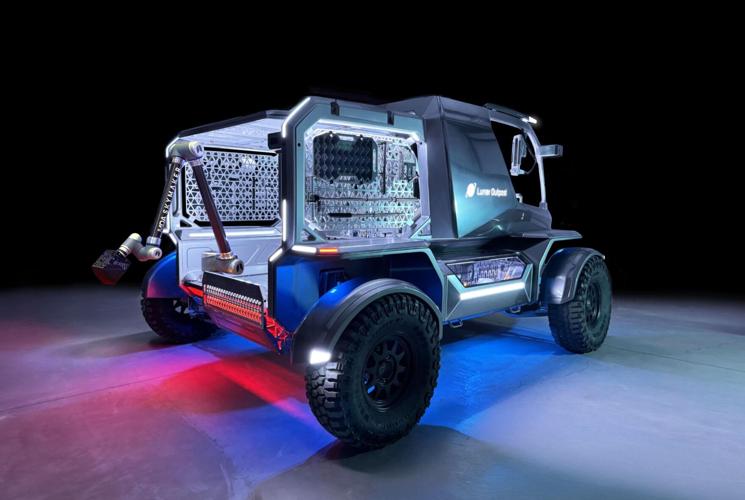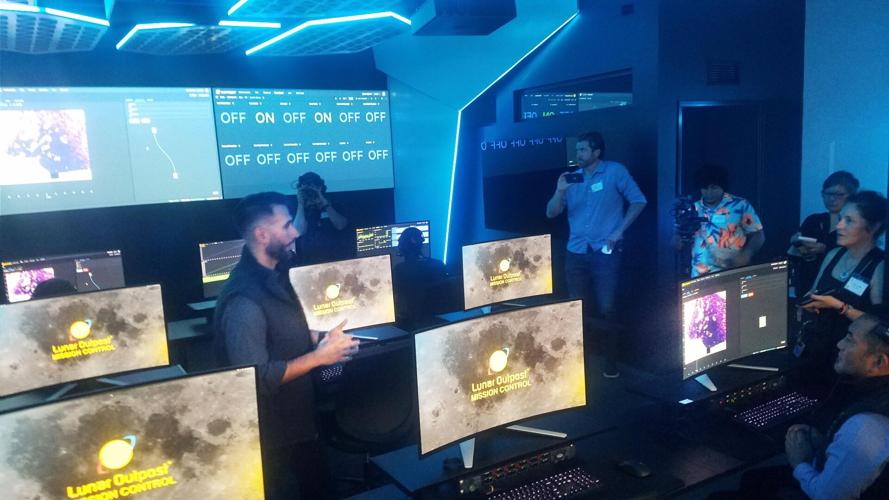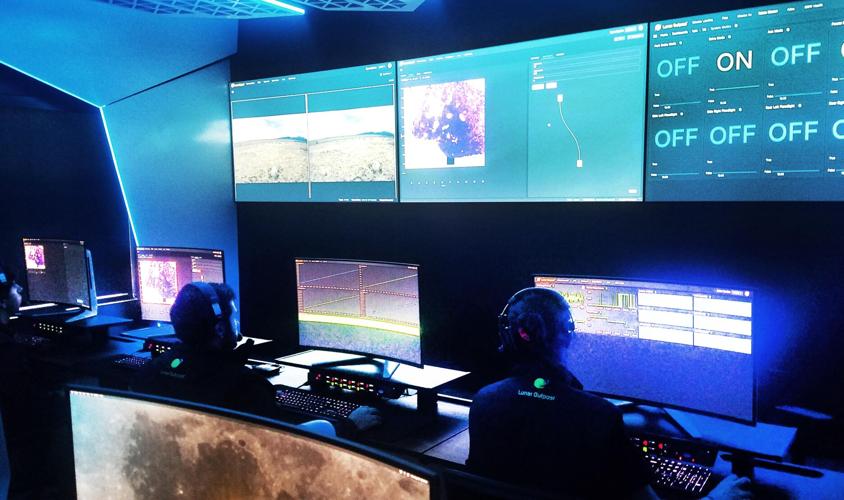Colorado company gives the feel behind the wheel of NASA’s moon buggy
Coloradans got a glimpse Monday of what could be the first “moon buggy” to carry astronauts around the lunar surface in five decades, from when Apollo crewmen Gene Cernan and Harrison Schmitt last took one out for a drive in 1972.
On Monday, Golden-based Lunar Outpost gave the press a demonstration tour of its mission control facility in Arvada, where its Eagle lunar terrain vehicle could be monitored or remote-controlled during a NASA mission to return astronauts to the moon.
Company founder and CEO Justin Cyrus demonstrated the control room, where a “pilot” using a monitor was remotely test-driving an LTV craft over a moon-like surface that was 130 miles away, at Rye, Colo.
Monday, visitors were scheduled to journey to Rye and ride the Eagle around the faux moonscape’s rocks and craters. The test version LTV, Cyrus said, is fitted with tires and a suspension system that are more earthlike than the actual vehicle will have for navigating the moon’s light gravity.
Artemis III Landing
But the control and communications systems, Cyrus said, are rigged to simulate issues that would arrive on a moon mission — including a time-lag in commanding the craft as signals from earth make the 200,000-plus-mile trip out to the moon and back.
Although Lunar Outpost has a NASA contract partnering with Lockheed Martin, General Motors, Goodyear and MDA Space to develop a rover concept, it faces competition from two other partnerships before a final contract is awarded.
That’s in addition to ifs-and-buts concerning NASA’s Artemis program as it works to bridge the long gap since humans last walked — and drove — around the surface of the moon.
The first Artemis landing, now rescheduled to 2027 or beyond, has stumbled over glitches including a Government Accountability Office report that called NASA’s timeframe unrealistic. Among issues are Boeing’s Orion crewed capsule, which stranded two astronauts aboard the International Space Station for nine months — still a component of the planned lunar mission.
But whenever the mission does fly, Lunar Outpost executives are confident their LTV will be aboard.
“Lunar Outpost’s experienced team and the capabilities it offers are a unique differentiator,” Lunar Outpost’s co-founder Forrest Meyen told The Denver Gazette. “Our talent sets us apart from our competition and increases our confidence in our selection.”
The company refrained from providing a dollar value on the current contract, but Meyen said it represents a significant expansion with a substantial impact for Colorado.
“We’ll be expanding the engineering workforce and investing in tech jobs and the training of engineers across the state, ultimately resulting in hundreds of new jobs in those respective fields,” Meyen said.
Meanwhile, a Colorado rover could fly back to the moon sooner than the Artemis landing.
A smaller scale LTV called MAPP, 15-by-18 inches and 22 pounds, was aboard last March when a Space-X Falcon 9 rocket carried an unmanned Athena lander by Houston-based Intuitive Machines to the moon’s south pole. Athena tipped over during landing, quickly losing its solar power in the darkness of a crater, with the MAPP LTV trapped underneath in its onboard garage.
A second chance
Colorado designers are hoping the small rover will get a second chance to cross the lunar surface sometime in early 2026, when Intuitive Machines has another unmanned trip planned. The Lunar Vertex Mission to study magnetic anomalies will attempt to set down in the moon’s Oceanus Procellarum, further from the lunar pole.
Meyen said that even at a site where shadows are less of a problem, the rover will have to deal with the moon’s extreme temperature variations. In addition to a flight director and the craft’s pilot, the control room will have six or seven specialists monitoring, including one handling thermal issues.
In the meantime, tests continue on the Eagle two-passenger design. Lunar Outpost’s Cyrus described the vehicle as resembling a dune buggy crossed with a heavy-duty truck, sporting a robotic arm in the truck bed.
Eagle will hit higher speeds than the Apollo astronauts did, even when they had their rover floorboarded. The moon buggy topped out at 11 miles per hour; while the new LTV, Cyrus said, could hit 25 mph.
But faster driving speeds are a matter for caution, even in the low traffic of the moon’s surface. The moon’s tiny gravity would greatly exaggerate the effect of any impact with a rock or rut, Cyrus said.
And if a human wasn’t aboard, it could be eight seconds before a series of signals crisscross vast distances between mission control and the craft, leaving little time to brake for something unexpected in the road.







